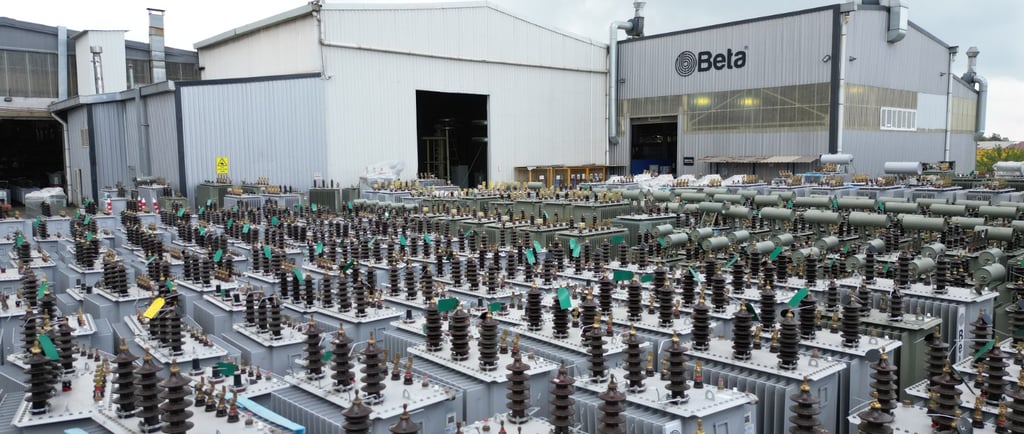Smart Grids and the Future of Transformer Technology


The evolution of electrical grids into smart grids represents a transformative shift in how energy is generated, transmitted, and consumed, and transformers play a pivotal role in this ongoing transformation. Smart grids integrate advanced communication, automation, and monitoring systems to optimize the performance of the entire electrical network, making real-time data collection, predictive maintenance, and dynamic load management possible. At the heart of this system, modern transformers are not just passive devices for voltage regulation but intelligent components that interact with the grid to ensure efficiency, reliability, and sustainability. One of the most significant advancements is the integration of Internet of Things (IoT) sensors, which continuously monitor transformer temperature, load, insulation condition, and vibration. This real-time information allows utility operators to detect potential faults before they lead to catastrophic failures, reduce unplanned downtime, and optimize energy usage, thereby enhancing overall grid efficiency.
The role of smart transformers is particularly crucial when incorporating renewable energy sources such as solar and wind power, which are inherently variable and can cause fluctuations in voltage and load. Adaptive transformers, capable of adjusting to these variations, ensure that the energy supplied to consumers remains stable while minimizing losses. These devices use advanced algorithms and control systems to balance load demand, regulate voltage, and even communicate with distributed energy resources to coordinate energy storage or demand response initiatives. Furthermore, artificial intelligence (AI) and machine learning are increasingly being applied to transformer operations, allowing predictive analytics to forecast equipment health, anticipate maintenance needs, and optimize operational schedules for maximum efficiency. By analyzing historical performance data and environmental conditions, AI-driven systems can provide recommendations that extend transformer lifespan and reduce energy waste.
Another critical aspect of smart grid integration is the ability to remotely manage transformers, which allows operators to make adjustments without the need for physical intervention. Remote tap changers, intelligent cooling systems, and automated fault detection all contribute to reducing operational costs while improving safety and reliability. Moreover, the implementation of communication protocols such as IEC 61850 ensures interoperability among devices, enabling seamless data exchange across the grid and providing a foundation for fully automated energy management systems. As energy demand continues to grow and the complexity of distribution networks increases, the importance of these advanced transformers cannot be overstated, as they allow utilities to maintain high service quality while accommodating a mix of conventional and renewable energy sources.
In addition to operational advantages, smart transformers contribute significantly to sustainability goals. By reducing energy losses, optimizing load distribution, and supporting integration of low-carbon energy sources, they help reduce greenhouse gas emissions associated with electricity generation. Furthermore, these devices are often designed with environmentally friendly materials and energy-efficient cooling systems, reflecting a broader industry trend toward sustainable electrical infrastructure. As we look to the future, the convergence of IoT, AI, and advanced transformer design will likely result in even more intelligent, adaptive, and efficient equipment, capable of supporting microgrids, decentralized energy systems, and real-time energy trading. The ongoing research and development in this field promise transformers that not only distribute power but also actively contribute to the stability, efficiency, and sustainability of the entire energy ecosystem.
Overall, the integration of smart transformers into modern electrical grids marks a significant milestone in the energy sector, offering unprecedented levels of control, efficiency, and reliability. Utilities that adopt these technologies gain the ability to proactively manage energy flows, reduce operational risks, and respond dynamically to fluctuating demand. This shift toward intelligent, data-driven infrastructure ensures that energy delivery becomes more resilient, efficient, and environmentally responsible, positioning smart transformers as essential enablers in the ongoing evolution of global power networks and paving the way for a future where electricity is managed in a more sustainable, reliable, and intelligent manner than ever before.
Innovation
Power transformers and energy solutions for all.
Contact
Support
+420 725 657 501
© 2025. All rights reserved.
287, 332 04 Losiná, Czechia
